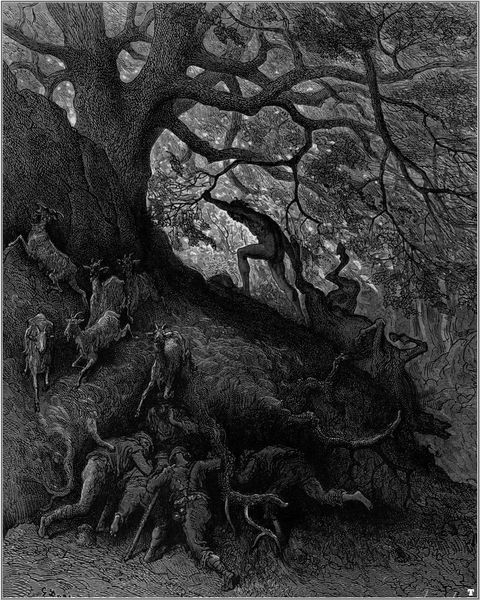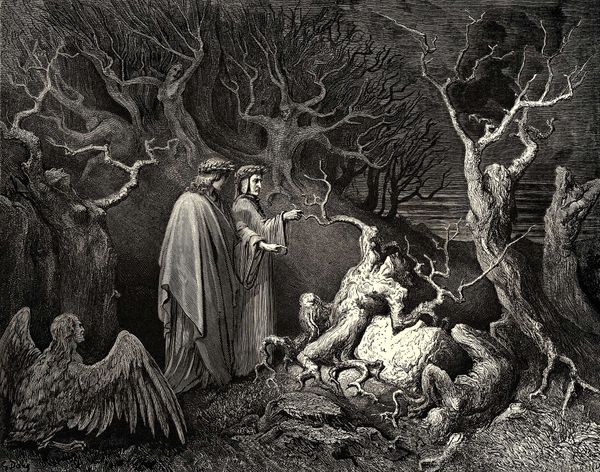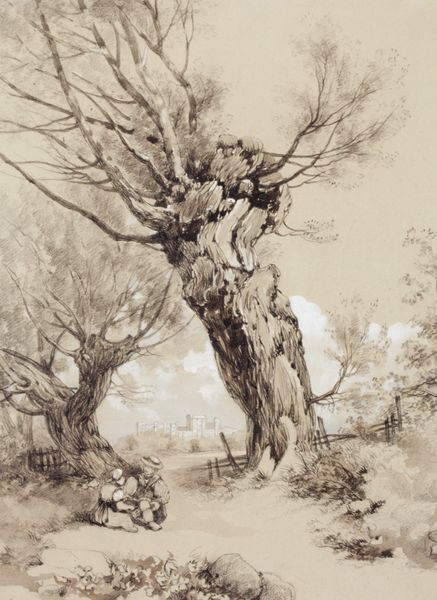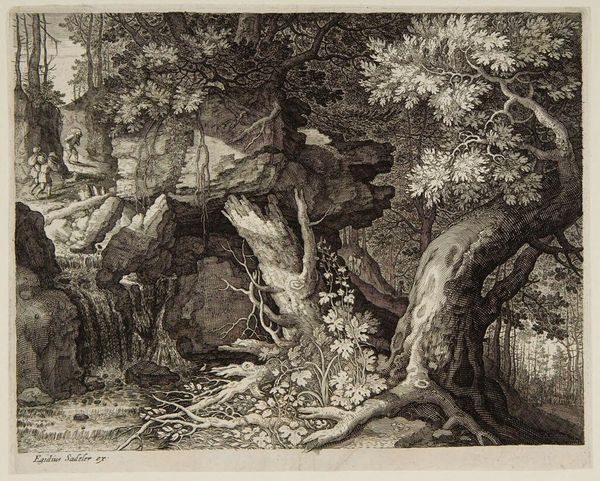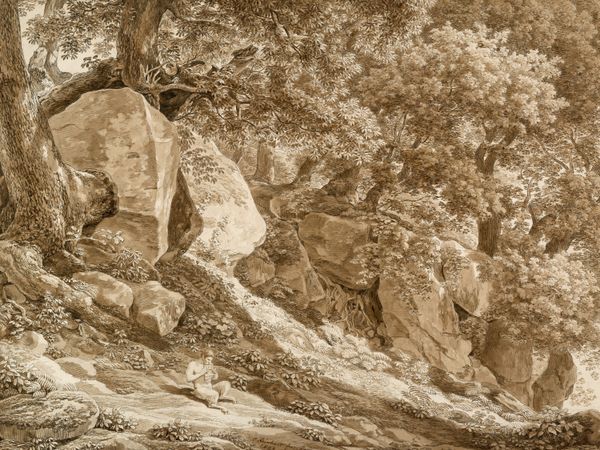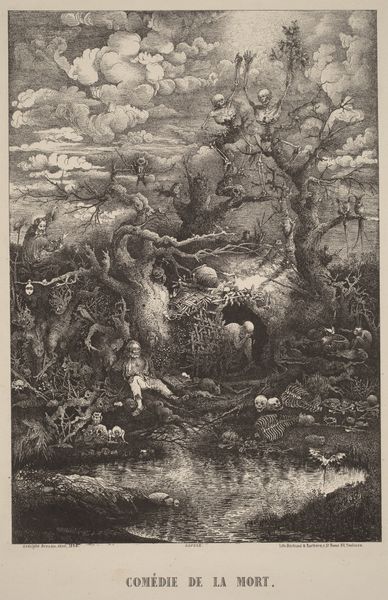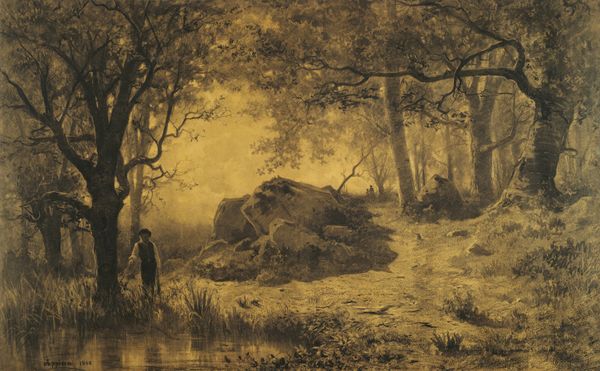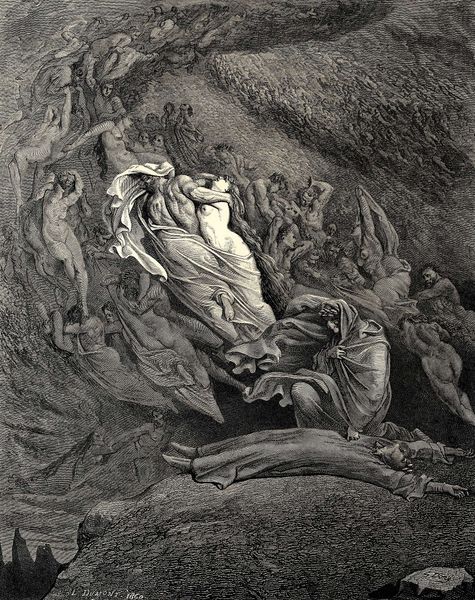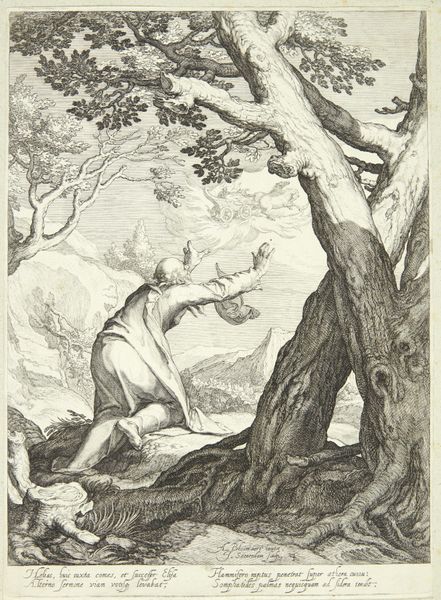
drawing, ink
#
drawing
#
narrative-art
#
landscape
#
figuration
#
ink
#
romanticism
#
monochrome
Copyright: Public domain
Editor: So, this ink drawing is "The Inferno, Canto 13," by Gustave Dore. It looks like an eerie forest scene. What immediately strikes me is the contrast between the twisted trees and the writhing figures. How would you approach interpreting this work? Curator: I see the ink itself as a key material. The intense cross-hatching and stark monochrome are crucial in conveying the sense of torment and spiritual desolation found within Dante’s hell. Consider the industrialization of printmaking in Dore's era: his works reached a vast audience, disseminating these potent images of suffering. How does that mass production and consumption relate to the themes of sin and punishment depicted? Editor: That’s a fascinating point! It shifts my understanding. I was initially focused on the artistic skill, but framing it within the context of mass production highlights its cultural impact. It makes you wonder about the accessibility of morality. Curator: Precisely! Dore wasn's just illustrating a story. He was creating commodities consumed by a wide audience, each impression contributing to a collective understanding and fear of divine retribution. The materiality of the image, duplicated and distributed widely, becomes integral to its meaning. Are we considering then the material, the drawing as a form of manufacture? How can we reconcile the concept of art with the more tangible reality of commodities? Editor: That definitely broadens the way I’ll look at art now, not just at the image, but also at how that image exists in the world as an object itself, reproduced and circulated. Thanks! Curator: My pleasure. It's vital to always ask: who made it, how, and for whom? These questions of production and consumption open up whole new vistas in art history.
Comments
No comments
Be the first to comment and join the conversation on the ultimate creative platform.

